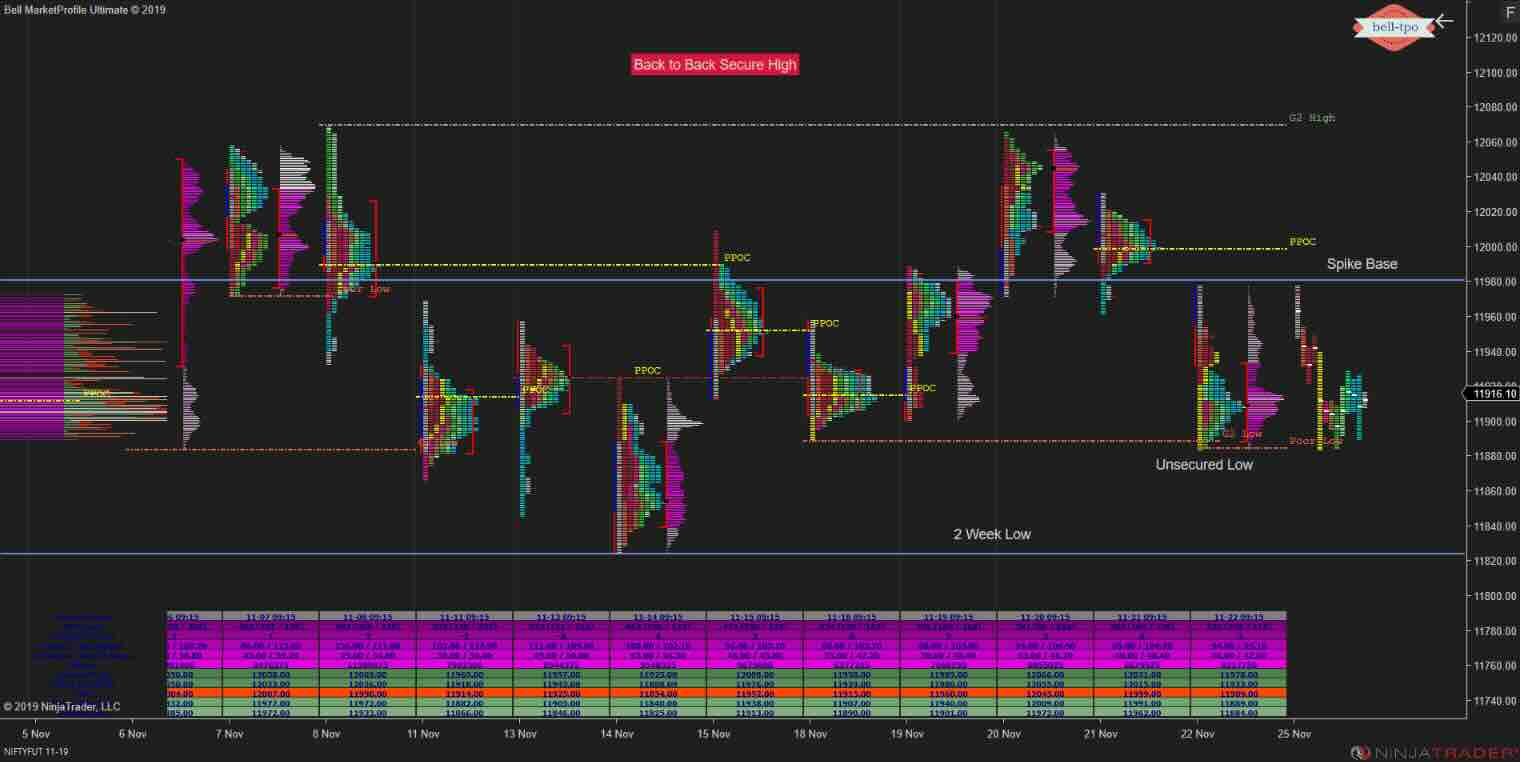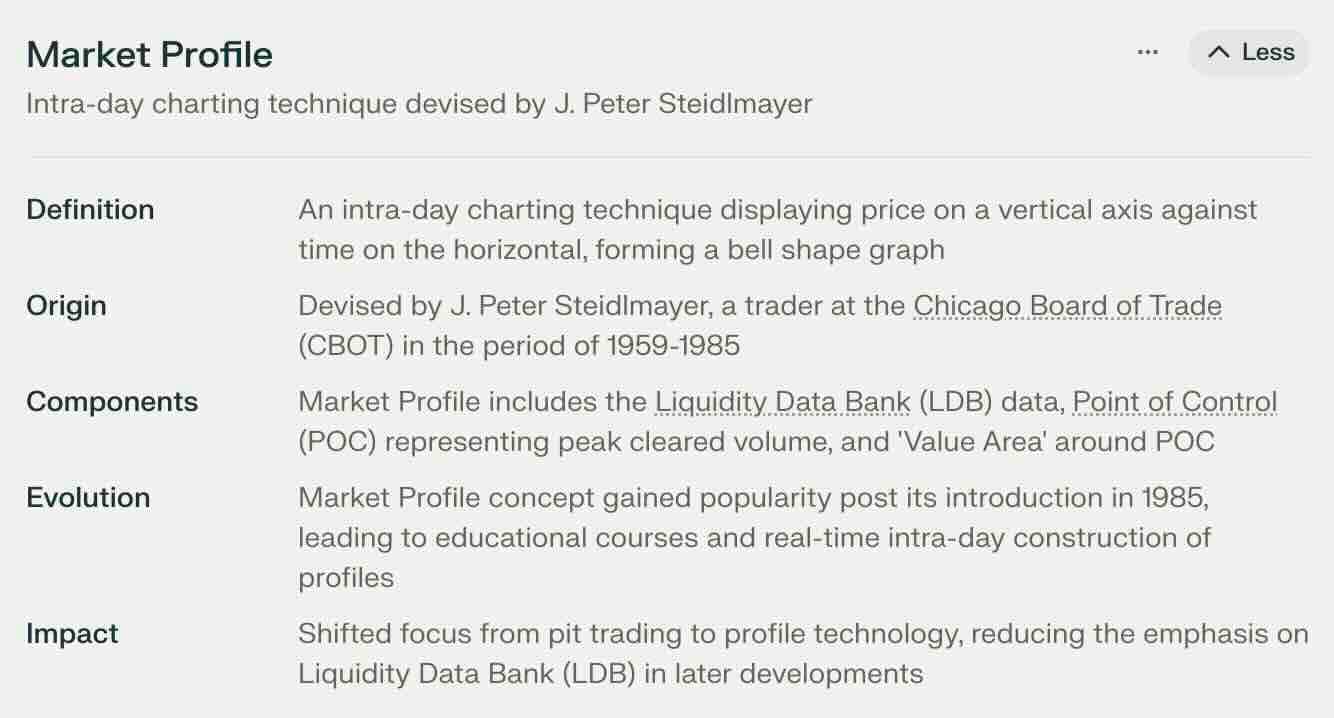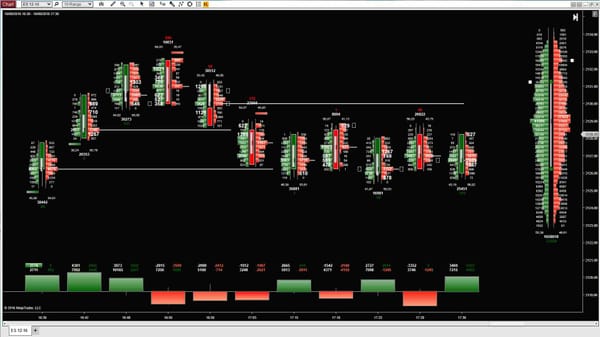What is Market Profile?
Market Profile is a charting method combining price, time, and volume to provide a structured view of market activity and dynamics.

Market Profile is a sophisticated charting technique that synthesizes price, time, and volume into views that give a view of market activity. It is an instrument developed by a trader at the Chicago Board of Trade, J. Peter Steidlmayer, that is supposed to give insights into dynamics and structure that would benefit a trader in making informed decisions.

Key Features of Market Profile
1. Time Price Opportunity (TPO)
Market Profile charts are constructed using time-price opportunities, which reflect the price level at which trading had actually taken place over a given quantity of time. Normally each TPO is shown by a letter or other symbol, and these are charted to develop a distribution that looks like a bell curve.
2. Point of Control (POC)
A POC is a price level at which the highest trading activity is observed throughout some period. It acts as a point of balance; in the future, prices may move back toward this level. This is crucial for determining support and resistance levels.
3. Value Area
The Value Area represents the price range in which about 70% of the trading activity took place and contains within it the Value Area High (VAH) and Value Area Low (VAL), which traders use to identify potential zones of support or resistance.
4. Auction Market Theory
Market Profile is based on the auction market theory, that's to say, it looks at the market as a real auction proceeding between the buyers and sellers. This perception helps traders understand price discovery and market sentiment.
Benefits of Market Profile
- Better Market Awareness: By merging price, time, and volume, Market Profile becomes a comprehensive profile representation that helps in recognizing the trend, possible reversal points, and consolidation phases.
- Risk Management: More detailed insight into support and resistance levels would help to set stop losses and profit targets effectively, hence more effectively managing risk.
- Sentiment Analysis: Trade activity distribution enables traders to interpret market sentiment and then trade accordingly.
Practical Applications
- Outlining Trading Opportunities: Market Profile helps in determining trading opportunities by showing zones where the price can get consolidated and areas from which it can break out.
- Strategic Trade Setups: Traders develop Market Profile-based strategic trade setups from the distribution of trading activity such as distinguishing poor highs and lows, separating consolidation and breakout periods.
- Technical Analysis: Market Profile can be combined with various other technical analysis tools in order to enhance trading strategies and validate trends.
Challenges and Considerations
There are reasons why it is really impossible to learn Market Profile to a beginner; for instance, at first glance, it looks very complex. Besides, it often leads newbies to interpret the data wrongly, which causes errors in their trading decisions. On top of that, it is not easy to find a reliable market profile indicator—it is never a tool built into many platforms.
Market Profile is a powerful tool that uniquely describes market activity by price, time, and volume in one display. This goes particularly far in assisting a trader to understand greater market dynamics and improvement within his/her trading approach. However, it needs a very sound grip on its concepts and careful interpretation for its effective use.
What is the difference between Order Flow and Market Profile?
Order Flow and Market Profile are two distinct trading methodologies that offer unique insights into market dynamics. Here's a detailed comparison of the two:
Order Flow
Order flow analysis refers to the real-time flow of buy and sell market orders. It enables a trader to understand market sentiment, supply and demand pressures in the market, and possible price moves by observing volume, time of coming, and direction of the orders. Here are some key aspects of Order Flow:
- Real-Time Data: Order Flow uses real-time data to analyze the order of transactions as they are placed, thus giving insight into market conditions instantly.
- Market Sentiment: It helps understand the intents and actions of market participants by viewing the balance between buying and selling pressure.
- Execution Strategies: Robust execution strategies can be designed by monitoring the speed and volume of order executions, which may show patterns of high-frequency trading and price reversals.
- Tools: These are the tools that commonly come with order flow analysis: Depth of Market, footprint charts, and heatmaps—different visual tools for rendering order flow visible and indicating hot spots of activity.
Market Profile
Market Profile is the charting methodology which applies price, time, and volume data in a way that a structured view of market activity can be gotten. It is a unique way of viewing markets through the variable of the distribution of trading activity over time. Key elements of the Market Profile include:
- Time Price Opportunity (TPO): Market Profile charts are constructed from TPOs, which represent the price level at which an instrument has traded over a given time period—usually distributed in a bell curve fashion.
- Point of Control (POC) and Value Area: The POC is the level of the highest volume traded, while the value area represents the area in which roughly 70% of trading activity took place. This serves to identify areas of support and resistance.
- Auction Market Theory: Based on the Auction Market Theory, Market Profile views the market as a two-way auction process that provides insights into price discovery and market sentiment.
- Historical Analysis: Unlike Order Flow, a Market Profile is generally used for post-facto analysis, which helps traders in understanding the past behavior of markets.
Comparison
| Aspect | Order Flow | Market Profile |
|---|---|---|
| Data Type | Real-time order data | Historical price, time, and volume data |
| Focus | Immediate market sentiment and order execution | Market structure and distribution over time |
| Tools | DOM, footprint charts, heatmaps | TPO charts, POC, Value Area |
| Application | Short-term trading and execution strategies | Identifying support/resistance and market trends |
| Complexity | Requires understanding of real-time dynamics | Involves interpreting distribution patterns |
Conclusion
Order Flow and Market Profile provide different perspectives on market activity. Order Flow is more focused on real-time data and immediate market sentiment, making it suitable for short-term trading strategies. Market Profile, on the other hand, offers a structured view of market behavior over time, helping traders identify longer-term trends and key price levels. Both methodologies can be used independently or in combination to enhance trading strategies.




